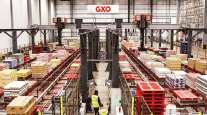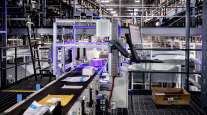Managing Editor, Features and Multimedia
Autonomous Trucks: A Timeline
This story appears in the June 12 print edition of iTECH, a supplement to Transport Topics.
Automated driving technology holds the potential to bring revolutionary gains in safety and productivity to the trucking industry. But how far will automation go? And how quickly will it happen? No one really knows what the future holds, and many factors could help or hinder the advance of automation in trucking, but I do think it would be helpful to consider a projected timeline. So I’ll take a crack at it.
 Clevenger
ClevengerIt appears that truck manufacturers and the new technology developers entering the industry will move forward on parallel paths, with the truck makers focusing first on advanced driver-assist technologies while the tech firms target self-driving and driverless capabilities.
It’s important to note that the large corporations that build and sell commercial vehicles today all continue to see the driver as indispensable to trucking for many years to come. They seem to view this as an evolution, not a revolution.
It will be up to the tech startups to change the conversation, and they’ll be trying to do just that in the coming years.
BEST OF JUNE iTECH: More stories, columns
LIVEONWEB: Watch replay of 'The Road to Automated Driving'
Here’s what I see in the crystal ball:
• 2021: Truck makers begin to introduce more advanced driver-assist features, such as lane keeping assist with automated steering, traffic jam assist and platooning. Meanwhile, technology developers and a handful of pioneering shippers and carriers have begun very limited deployments of unmanned trucks on specific freight routes in close cooperation with government agencies. A small number of fleets now are implementing driverless yard moves.
• 2028: Fleets can now order new trucks with factory-installed autopilot systems that automate on-highway driving, freeing drivers to perform other tasks in the cab or just relax. By now, several model years of new passenger cars are sending vehicle-to-vehicle safety messages, and trucks have begun to tap into that V2V network to prevent accidents and collect data to support self-driving software. The use of unmanned trucks enabled by retrofitted technology has expanded but remains limited to certain highways and still represents a relatively small portion of the industry. Platooning has evolved to the point that follower trucks can operate without a driver, but the lead truck is still manned.
• 2035: Truck makers begin selling their first fully autonomous vehicles for highway use. Fleets can now select from day cabs, sleepers and cabless tractors. Most are still purchasing day cabs and sleepers, but the drivers of those trucks are assisted by a plethora of safety and automated driving systems. The role of the driver is increasingly morphing into that of a systems manager rather than a vehicle operator. Drivers also are handling more logistics planning and customer service responsibilities.
• 2042: Driverless trucks are now common in over-the-road trucking, in some cases running in fully autonomous platoons on dedicated freight lanes. Technology developers continue to refine automated driving systems for operation on roads with cross traffic, intersections and pedestrians, but shorthaul and local routes are still handled primarily by human drivers aided by onboard safety systems.
I see this as a good baseline projection for how automated trucking might evolve in the years ahead, but of course, there are many factors that could speed or slow this process. Perhaps early deployments will struggle with high-profile crashes that lead to backlash from the public and spur legislation that constrains the growth of automation. Or perhaps one or more self-driving truck developers will quickly achieve resounding success in the marketplace, forcing the rest of the industry to accelerate its move to higher levels of automation. But this is my best sense of where the current trajectory may take us.
Now let’s put this in a time capsule, check back in 20 or 30 years and see just how right or wrong this prediction turns out to be.




